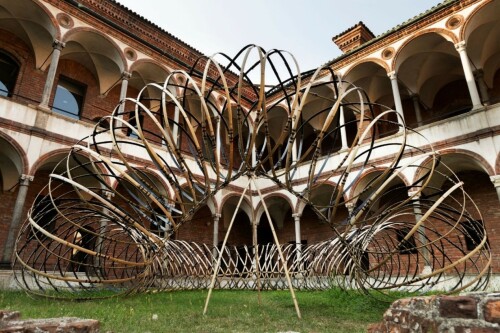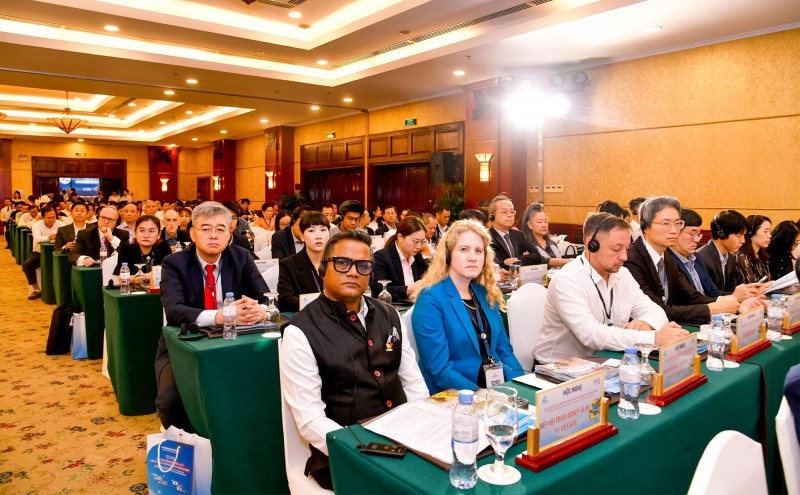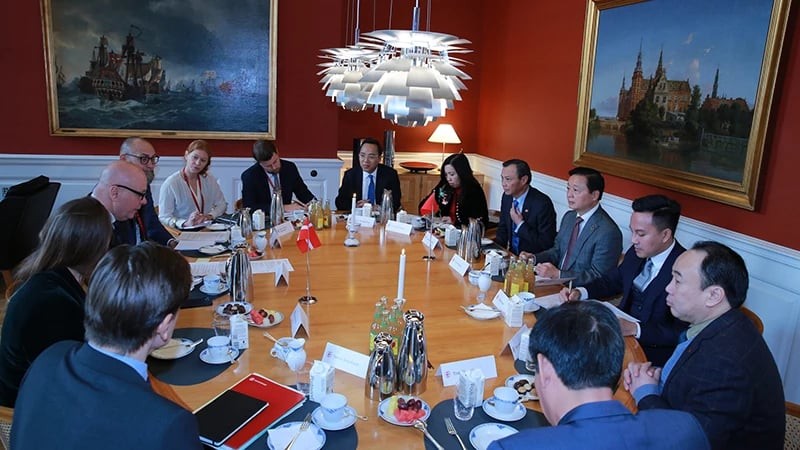OPPO Partners With Japanese Architect Kengo Kuma For Milan Design Week 2021
MILAN, ITALY - Media OutReach - 6 September 2021 - The multi-sensory installation works to the theme "Creative Connections" by fusing Architecture with Music, design innovation, technological prowess, and user experience to create a sense of time and space, and will be on display in Milan's Cortile dei Bagni courtyard for the duration of Milan Design Week, until 19 September.

Bamboo (竹) Ring :|| Weaving a Symphony of Lightness and Form by OPPO x Kengo Kuma
This landmark project is an evolution of Kengo Kuma and OPPO's Bamboo Ring exhibition which debuted at the 2019 edition of the London Design Festival and explored the harmonious relationship between humans and nature through the envisioning of lightweight yet strong structures made with bamboo and carbon fiber. This year, OPPO's experiential installation uses pioneering technology to engage all the senses through a series of orchestral scores composed by Japanese violinist Midori Komachi with Musicity.
The composition is based on the cycle of seasons and moves through the structure encouraging the public to walk around and be captured by its aural narrative. The changing soundscapes integrate the sound of Midori's violin (built in Milan in 1920 and enhanced with carbon fiber itself) from O Relax, OPPO's digital wellbeing application that offers comforting nature and city sounds to relax your mind taken from locations around the globe including Reykjavik, Beijing, and Tokyo.
"OPPO is a human-centric brand, our focus is on innovating for the people. We are delighted to partner with Kengo Kuma again, an architect who is known for seamlessly integrating nature and culture. Together, we demonstrate how we can use technology and design to add value to our daily lives drawing on our philosophy principles of "Technology as an Art Form" and our brand mission "Technology for Mankind, Being Kind to the World." – Jintong Zhu, Head of OPPO London Design Centre
The installation's woven structure – crafted from rings of bamboo and carbon fiber – becomes a musical instrument as music travels through it via structural sound technologies originating from OPPO London Design Centre's research. Innovative technology including new haptic motors, MEMS speaker strips, and exciters work together to produce an immersive base and higher frequencies that reverberate the bamboo with Violin's vibrato and the effect of a percussion instrument.
"When I design architecture, I'm interested in designing the rhythm and the tone rather than the silhouette, and contemporary music gives us many lessons about how to create new rhythms and tones in architecture. This pavilion is one of the explorations into the new rhythms and tones in architecture combining visual and acoustic experiences of the visitors." – Kengo Kuma, architect
After Milan Design Week, OPPO will donate Bamboo Ring to Arte Sella Park in Trentino, Italy, a contemporary art museum with outdoor exhibits made from natural materials and backdropped by the mountainous Sella Valley, where it will find its permanent home.
About OPPO
OPPO is a leading global smart device brand. Since the launch of its first smartphone - "Smiley Face" - in 2008, OPPO has been in relentless pursuit of the perfect synergy of aesthetic satisfaction and innovative technology. Today, OPPO provides a wide range of smart devices spearheaded by the Find and Reno series. Beyond devices, OPPO provides its users with the ColorOS operating system and internet services like OPPO Cloud and OPPO+. OPPO operates in more than 40 countries and regions, with 6 Research Institutes and 4 R&D Centers worldwide, as well as an International Design Centre in London. OPPO's more than 40,000 employees are dedicated to creating a better life for customers around the world.
About Kengo Kuma
Kengo Kuma (b.1954) decided to pursue architecture at a young age, after seeing Kenzo Tange's Yoyogi National Gymnasium for the 1964 Tokyo Olympics. He studied Architecture at The University of Tokyo (completing a Masters in 1979) and established Kengo Kuma & Associates in 1990. As Professor at the Graduate School of Architecture at The University of Tokyo, he set up the Kuma Lab to research new materials and conduct a course in advanced digital design and fabrication. His award-winning firm aims to design architecture that naturally merges with its surroundings, proposing gentle, human-scaled buildings. The office is constantly in search of new materials to replace concrete and steel, and seeks a new approach in a post-industrial society.
Recommended
 Economy
Economy
An Giang Showcases Investment Opportunities
 Economy
Economy
Denmark Eyes Vietnam for Business
 Economy
Economy
